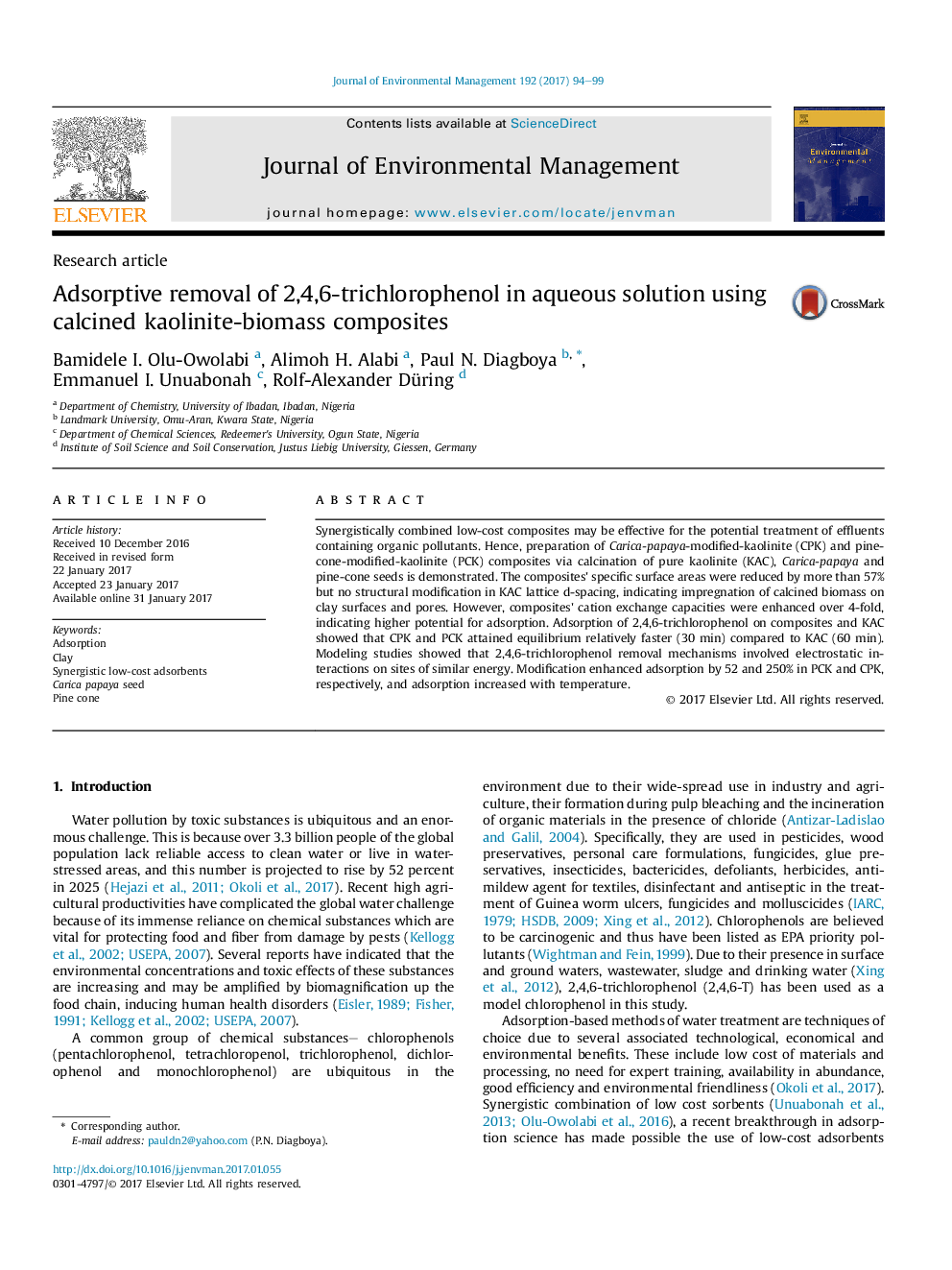| Article ID | Journal | Published Year | Pages | File Type |
|---|---|---|---|---|
| 5117031 | Journal of Environmental Management | 2017 | 6 Pages |
â¢Calcined biomass modified kaolinite clay composite adsorbents were prepared.â¢The composites had faster adsorption rates (less than 30 min).â¢The composites had higher adsorption efficiencies (up to 250% more than kaolinite).â¢Low-cost composite adsorbents may be useful for effluent treatment.
Synergistically combined low-cost composites may be effective for the potential treatment of effluents containing organic pollutants. Hence, preparation of Carica-papaya-modified-kaolinite (CPK) and pine-cone-modified-kaolinite (PCK) composites via calcination of pure kaolinite (KAC), Carica-papaya and pine-cone seeds is demonstrated. The composites' specific surface areas were reduced by more than 57% but no structural modification in KAC lattice d-spacing, indicating impregnation of calcined biomass on clay surfaces and pores. However, composites' cation exchange capacities were enhanced over 4-fold, indicating higher potential for adsorption. Adsorption of 2,4,6-trichlorophenol on composites and KAC showed that CPK and PCK attained equilibrium relatively faster (30Â min) compared to KAC (60Â min). Modeling studies showed that 2,4,6-trichlorophenol removal mechanisms involved electrostatic interactions on sites of similar energy. Modification enhanced adsorption by 52 and 250% in PCK and CPK, respectively, and adsorption increased with temperature.
Graphical abstractDownload high-res image (263KB)Download full-size image
